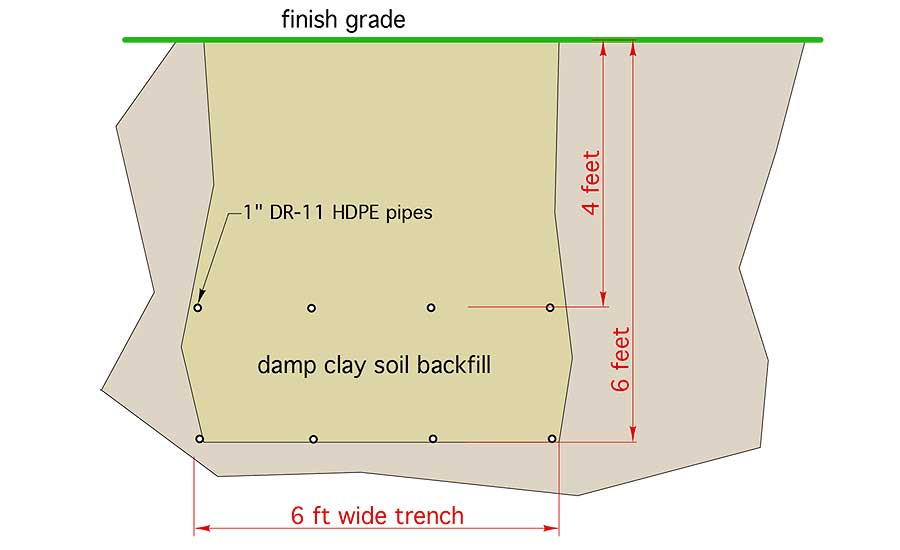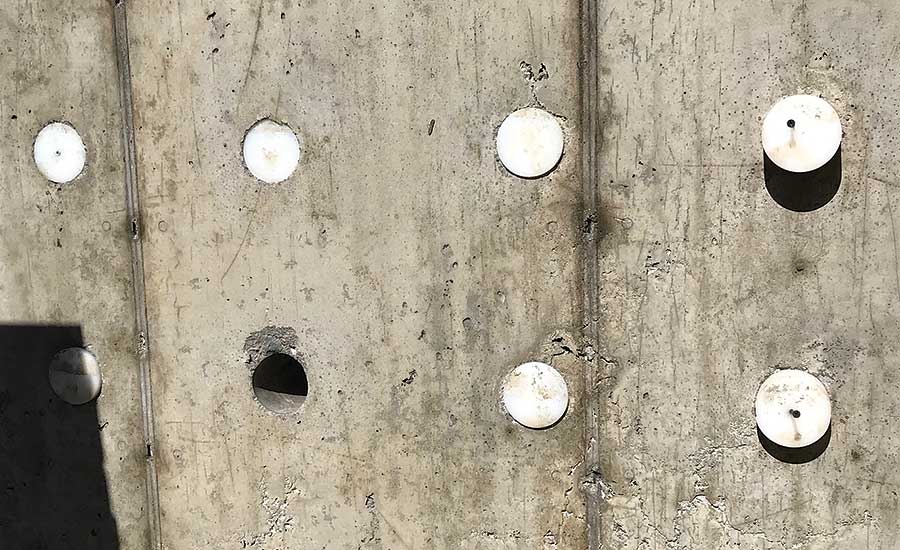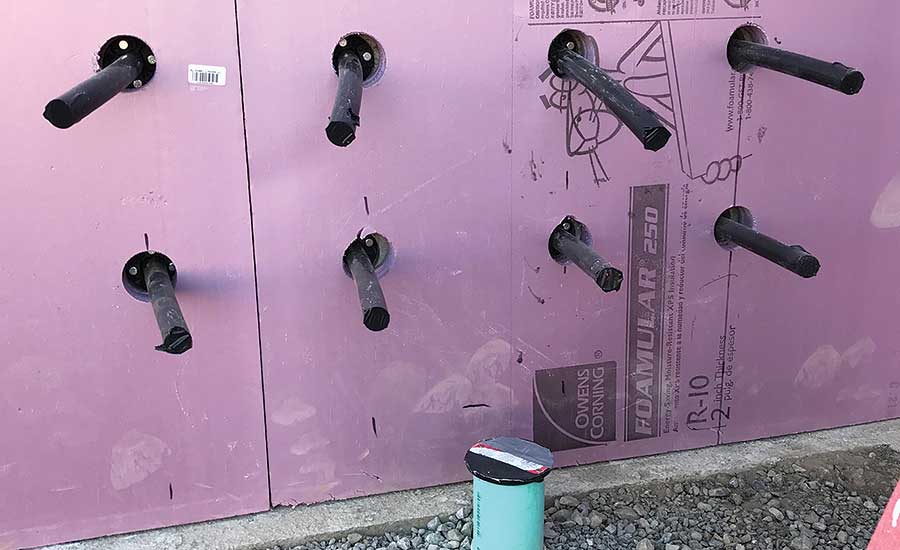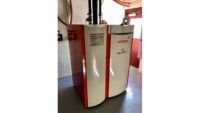I recently helped install a closed-loop geothermal heat pump system for my daughter, her husband and their 1-year old son, Henry. It was part of a new-home construction project, and one that convinced me it “hurts more” to help build a house at age 63 compared to when I built our home at 24.
A 4-ton-rated water-to-water heat pump will supply the home with space heating using low-temperature radiant floors and panel radiators. It also will supply the majority of the domestic hot water. In summer, the heat pump will supply chilled water to a central air handler for cooling and dehumidification.
The building site was 2.5 acres, providing ample space for a horizontal earth loop. We designed the earth loop as a “4 over 4” arrangement with an average tube depth of 5 to 6 feet below finish grade, as shown in Figure 1.
> FIGURE 1
The trench would have to make several gentle changes in direction to accommodate onsite factors. Four parallel circuits of 1-inch DR-11 HDPE pipe would be run in a trench dug 6 feet deep and 6 feet wide. Each circuit would be just under 1,000 feet long.
The supply and return end of each circuit would be routed through 3-inch diameter holes in the poured concrete foundation, and manifolded inside the basement. Figure 2 (on Page 19) shows how we used 3-inch diameter solid polyethylene “rods,” held in place between the concrete forms for screws, to form the 8 required holes. The rods were spaced out and aligned to make it easy to connect the earth loops to an interior manifold.
> FIGURE 2
After the concrete walls had cured for a couple of days, the forms were removed, and a few light hammer taps on the end of the rods pushed them out, leaving a neatly cast hole ready for a tube and compression collar. Figure 3 shows the 8 tubes passing through their respective holes along with the compression seals that will keep any ground water outside.
> FIGURE 3
A new approach
In past horizontal earth-loop installations, we’ve created “bobby pin” turn-arounds, in a vertical plane, at the end of the trench as illustrated in Figure 4.
> FIGURE 4
To make a “bobby pin” turn in a vertical plane and keep the tubing at a reasonable depth, it’s necessary to dig deeper where the tubing will be turned. The tubing needs to be carefully bent to form the return bends, and the area around the bends needs to be carefully backfilled with sand or granular soil, usually by hand, to ensure that the tubing is not crushed by heavy chunks of soil falling from the excavator bucket. This method works, and we’ve used it on several past projects, but perhaps there’s a better approach.














